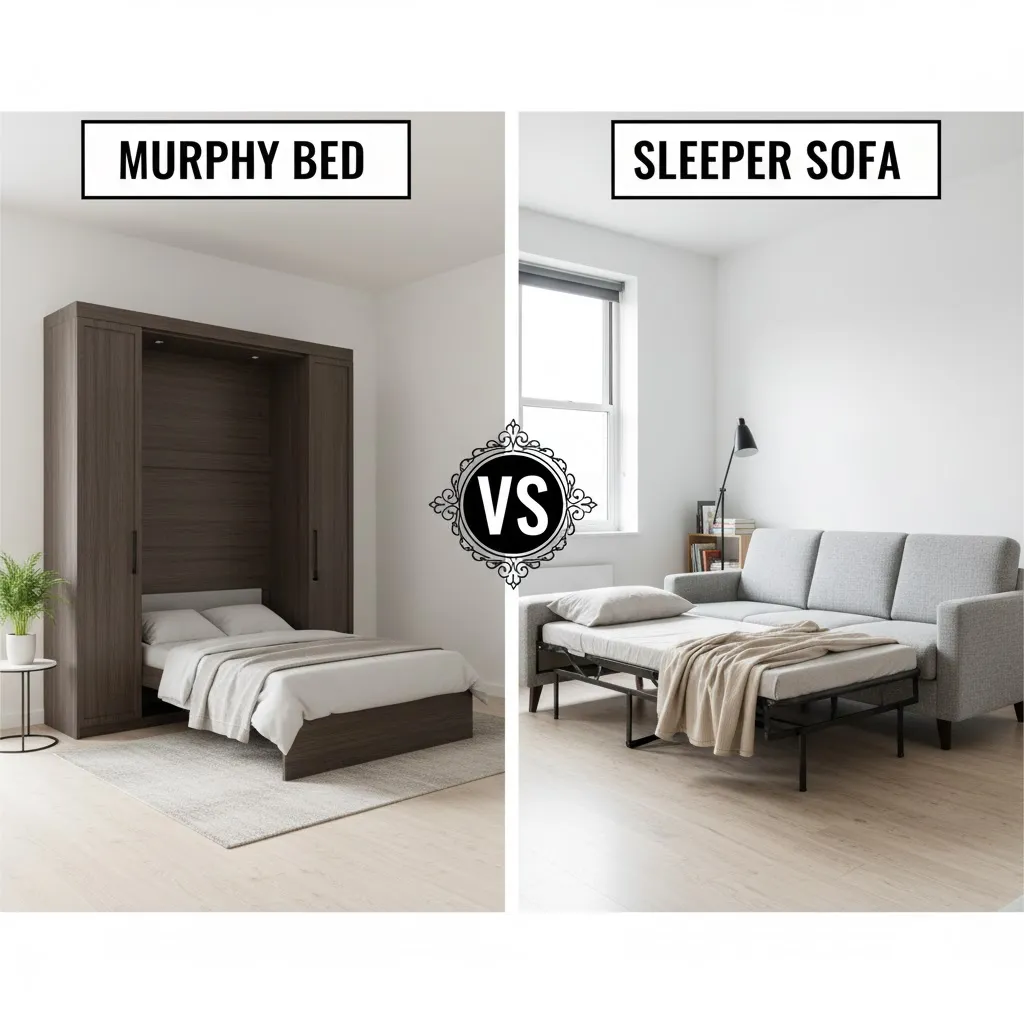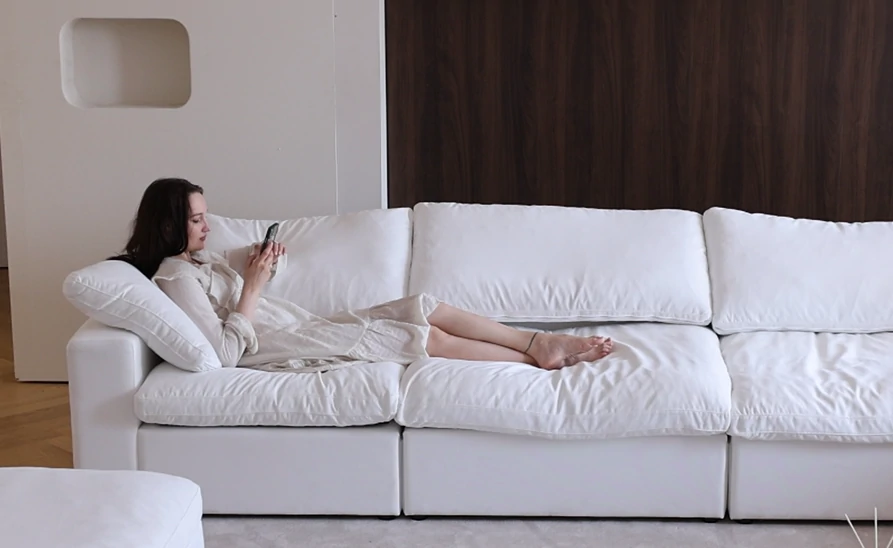Comfort and Sleep Quality
A Murphy bed gives you a full-size mattress, so it’s perfect for nightly use or long-term sleeping. Sleeper sofas, on the other hand, usually have thinner or variable mattresses, making them better for occasional guests. If comfort is your top priority, this is a key point to consider in the Murphy Bed vs Sleeper Sofa debate.
Space and Room Layout
A Murphy bed folds up into the wall, saving valuable floor space — ideal for small rooms, studio apartments, or multipurpose areas. Sleeper sofas need open space to pull out the bed, so they work best in living rooms or guest rooms. When deciding between a Murphy Bed vs Sleeper Sofa, think about how much room you can spare and how often you’ll use it.
Style and Design Options
Murphy beds often hide away in cabinetry or wall units, giving your room a clean, minimalist look. Sleeper sofas come in lots of styles — from classic to modern, and even sectional-inspired designs. So they can blend seamlessly into your living room décor. Style is a big factor when weighing Murphy Bed vs Sleeper Sofa.
Setup and Convenience— Murphy Bed vs Sleeper Sofa
A Murphy bed folds down easily, giving you a full-size sleeping surface in seconds. The “quick setup” is basically just pulling down the bed from the wall, which usually takes less than a minute once installed. However, a Murphy bed needs professional installation to securely attach it to the wall, ensuring safety and stability. Installing it typically takes 2–4 hours, depending on the design, wall type, and built-in storage features. Once set up, though, daily use is effortless — you simply fold it down or push it back up, making it a space-saving solution with minimal daily effort.
A sleeper sofa is also quick to set up, often in 30–60 seconds. You pull out the bed frame from under the sofa cushions, adjust the mattress, and you’re ready to go. It’s convenient for occasional use, like weekend guests or short naps, because it requires no wall installation. However, the pull-out mechanism can be heavier to lift than a Murphy bed fold, and the cushions may need rearranging afterward, which can add a few extra seconds to the setup.
Durability and Maintenance
A Murphy bed is built to last, featuring solid hardwood or metal frames that provide strong structural support. Its standard mattress rests on slatted or reinforced panels, designed to handle nightly use for 10–20 years without sagging. Because the bed is anchored to the wall, weight distribution is stable, and wear on the frame is minimal. Many Murphy beds also incorporate high-quality hinges and gas pistons for smooth folding, which are engineered to withstand thousands of cycles, ensuring long-term reliability.
A sleeper sofa, on the other hand, generally lasts around 5–10 years. Its shorter lifespan is largely due to the pull-out mechanism and frame design. Most sleeper sofas use metal or composite frames that support both seating and a fold-out mattress. Repeated folding and unfolding can stress the joints and metal components over time. Additionally, the mattress is often thinner or made from memory foam, which may compress faster with regular use. Cushions, upholstery, and springs also experience daily wear since the sofa functions as both a seating and sleeping surface.
Cost Comparison
Murphy beds typically range from $1,000–$4,000, depending on design, mattress quality, and storage features. Sleeper sofas usually cost $500–$2,000, influenced by style, mattress, and size. While a Murphy bed costs more upfront, the investment pays off with long-term comfort, durability, and space-saving benefits — all important when choosing between a Murphy Bed vs Sleeper Sofa.
If you want to learn more about different types of sofas, check out our guide on Leather Sofa vs Fabric Sofa to compare materials, comfort, and style.







